Introduction to SEO
SEO isn’t just a tech term anymore—it’s the beating heart of online visibility. Whether you’re a blogger, business owner, freelancer, or aspiring influencer, understanding SEO can make or break your online success. Search Engine Optimization, or SEO, is how websites communicate with search engines like Google, Bing, and Yahoo. It’s how content rises through the ranks of search results and how users find what they’re looking for—hopefully your site.
Think of SEO like a digital librarian organizing the internet. If your website doesn’t follow the right rules or provide the right clues, it stays buried under layers of competition. But once you understand the basics, SEO becomes your most powerful digital ally. This guide is crafted for absolute beginners who want to master SEO from the ground up.
We’re going to break down everything: from what SEO actually is, how search engines work, how to do keyword research, and how to optimize content for users and search engines alike. This isn’t theory—it’s practical, actionable advice for real-world success in 2025.
What is SEO?
The Core Purpose of SEO
At its core, SEO is about visibility. It helps your content be seen by the right people at the right time. When someone searches for “best pizza near me” or “how to start a blog,” they’re relying on search engines to bring them the most relevant, trustworthy results. SEO is the art and science of getting your website into those top spots.
But SEO is more than just plugging in a few keywords. It’s about understanding user intent—what people are really looking for—and delivering it in the best possible way. If Google is a giant library, SEO is the index system that helps users find the right book on the right shelf.
For businesses, SEO can lead to increased leads, higher sales, and better brand visibility. For bloggers and creators, it can bring more traffic, engagement, and followers. And for nonprofits or educators, SEO can amplify your message and reach.
Why SEO Matters for Everyone Online
Here’s a truth bomb: 75% of users never scroll past the first page of search results. That means if your site isn’t optimized, it might as well not exist online. SEO isn’t just for big brands—it’s for anyone with something to share. Whether you’re launching an online store, writing recipes, or reviewing tech gadgets, SEO is your ticket to digital relevance.
And the best part? You don’t need a tech degree or a massive budget to start. All you need is a willingness to learn and apply the principles we’ll cover in this guide.
How Search Engines Work
Crawling, Indexing, and Ranking Explained
Imagine billions of webpages scattered across the web. How does Google even know they exist? That’s where crawling comes in. Crawlers (or bots) are like digital spiders that “crawl” websites, following links and collecting data.
Once crawled, pages are stored in an index—a massive digital library. From there, Google decides how to rank these pages based on over 200 ranking factors, such as relevance, speed, mobile-friendliness, backlinks, and content quality.
Ranking is the magic sauce. It’s how Google decides which of the billions of pages deserve to show up first. When you search “best hiking boots,” Google sifts through its index and ranks results based on your query, location, language, and search history.
How Algorithms Shape Search Results
Google’s algorithm is like a recipe with hundreds of ingredients. Some ingredients (like relevant keywords or mobile usability) are well-known. Others (like user dwell time or click-through rate) are closely guarded secrets. The algorithm gets updated regularly—sometimes daily.
Big updates like BERT or Helpful Content Update dramatically change how content is evaluated. But one thing remains constant: Google wants to deliver the best, most relevant content to users. And if your site aligns with that goal, you’re more likely to rank well.
The Three Pillars of SEO
On-Page SEO
This is everything you do on your website to optimize it for search engines. Think content, headers, meta descriptions, images, and internal links. It’s all about making your content relevant and easy to understand for both users and search engines.
On-page SEO starts with keyword research—figuring out what terms your audience is searching for. From there, you strategically place those keywords in your content, titles, headers, and URLs.
It’s also about readability. Search engines love content that’s well-structured, mobile-friendly, and easy to digest. Use short paragraphs, bullet points, and clear headings to make content user-friendly.
Off-Page SEO
This refers to everything you do outside your website to improve its visibility. The biggest player here is backlinks—links from other websites pointing to yours. Think of backlinks as digital endorsements. The more high-quality backlinks you have, the more trustworthy your site appears.
Other off-page factors include social media signals, guest posting, brand mentions, and online reputation. All these elements build your domain authority, helping you rank higher.
Technical SEO
This is the behind-the-scenes magic that ensures your site is fast, mobile-optimized, and easy to crawl. Think page speed, XML sitemaps, HTTPS, structured data, and clean code.
If on-page SEO is the face of your content and off-page SEO is your reputation, then technical SEO is the foundation holding it all together.
Keyword Research for Beginners
Why Keywords are the Foundation
If SEO were a house, keywords would be the blueprint. They help you understand what your audience is searching for and allow you to tailor content around those queries. Without proper keyword research, you might be writing great content—but for the wrong audience.
Keywords help you bridge the gap between what people are typing into search engines and the content you’re offering. Whether short-tail (“shoes”) or long-tail (“best trail running shoes for beginners”), keywords guide your SEO strategy.
You don’t just need high-volume keywords—you need the right ones: low-competition, buyer-intent, and long-tail keywords often bring in more targeted traffic and higher conversions.
Tools to Use for Keyword Research
There are tons of tools (free and paid) to help you find keywords that matter:
- Google Keyword Planner – Great for beginners.
- Ubersuggest – Offers keyword volume, difficulty, and content ideas.
- AnswerThePublic – Visualizes questions people ask around a keyword.
- Ahrefs / SEMrush / Moz – Advanced tools for in-depth SEO analysis.
- Google Search Console – See what queries are already bringing you traffic.
These tools can show you keyword difficulty, search volume, and related terms. Combine data with user intent, and you’ll have a goldmine of content ideas that actually rank.
On-Page SEO Best Practices
Optimizing Titles, Headers, and Content
Let’s get something straight—Google reads your content almost like a human does. If your titles are vague, your headers are messy, and your content is stuffed with irrelevant info, Google will pass you by. On-page SEO starts with clarity and structure.
Your title tag should include your primary keyword and appeal to human curiosity. It’s what users see in search results—so make it count. Example: instead of “Home Page,” use “Affordable Organic Skincare Products – Free Shipping.”
Next, use headers (H1, H2, H3) wisely. Your H1 is your main title (only one per page). Use H2s for section headers, and H3s to break down details further. This makes your content easier to read and gives search engines a logical hierarchy.
When writing content:
- Use your primary keyword in the first 100 words.
- Naturally include secondary keywords and synonyms.
- Keep paragraphs short (3–4 lines max).
- Add images with alt text that includes relevant keywords.
Google rewards content that’s relevant, valuable, and easy to navigate—so write for readers first and search engines second.
SEO-Friendly URLs, Meta Tags, and Internal Linking
URLs should be short, clean, and include your main keyword. For example:
✅ good: /seo-basics-guide
❌ bad: /1234/article-id=5678/seo-abc-xyz-2025/
Meta descriptions don’t directly affect rankings but drastically impact click-through rates. A compelling, keyword-rich summary can convince users to click your link over others.
Internal linking is another underrated strategy. Link to other relevant pages within your site using anchor text that describes the page you’re linking to. It keeps users engaged longer and helps search engines crawl your site more effectively.
Bonus tip: Include external links to high-authority sources to add credibility and context—just don’t overdo it.
Off-Page SEO Techniques
Backlinks: The Internet’s Trust Currency
Think of backlinks as votes of confidence. When a reputable website links to yours, it tells Google your content is trustworthy. Not all backlinks are equal though. One backlink from a high-authority site (like Forbes) can be worth more than dozens from low-quality directories.
There are three main types of backlinks:
- Natural links – Earned organically when someone finds your content valuable.
- Manual outreach links – Earned by pitching your content to bloggers, journalists, or influencers.
- Self-created links – From forums, blog comments, or directories. These carry less value and should be used sparingly.
Guest posting, broken link building, and HARO (Help A Reporter Out) are powerful techniques to build high-quality links. Just avoid link farms or buying backlinks—they might work short-term but risk getting penalized.
Consistency is key. Focus on creating link-worthy content and building real relationships with others in your niche.
Social Media & SEO: Do They Connect?
While social signals (likes, shares, tweets) don’t directly impact rankings, they help your content reach more people—which can lead to backlinks and more traffic. It’s all connected.
Here’s how to make social work for your SEO:
- Share content across all relevant platforms.
- Use click-worthy headlines and engaging visuals.
- Add social sharing buttons on your site.
- Engage with communities on Reddit, LinkedIn, and Quora.
Even if social media doesn’t boost rankings outright, it improves brand visibility, drives traffic, and helps you establish authority. That indirectly improves your SEO performance.
Technical SEO Made Simple
Website Speed and Mobile Friendliness
No one likes a slow website—not even Google. In fact, page speed is a confirmed ranking factor. Aim for a load time of under 3 seconds. Every second longer increases bounce rates and decreases conversions.
To improve your speed:
- Compress images (use WebP or JPEG XL formats).
- Minify CSS, JavaScript, and HTML.
- Use caching and a reliable hosting provider.
- Leverage a CDN (Content Delivery Network) for faster global load times.
Mobile-friendliness is equally vital. Over 60% of all web traffic comes from mobile devices, and Google uses mobile-first indexing. That means your mobile site is the default version Google evaluates.
Use responsive design to ensure your site looks great on all screen sizes. Use tools like Google’s Mobile-Friendly Test to find issues before they affect your rankings.
Structured Data and Site Architecture
Structured data (also known as Schema markup) helps search engines understand your content better. It can also help you get rich snippets—enhanced search results that show ratings, prices, FAQs, and more.
Implement Schema for:
- Products
- Recipes
- Events
- Articles
- FAQs
- Local businesses
It increases visibility and click-through rates. Use tools like Schema.org and Google’s Rich Results Test to validate your markup.
As for site architecture, it should be flat and organized. Users (and crawlers) should be able to reach any page within 3 clicks. Use a logical category structure and an XML sitemap to make indexing easier.
Common SEO Mistakes to Avoid
Keyword Stuffing and Thin Content
Stuffing your pages with keywords is an outdated tactic that now hurts more than it helps. Google’s algorithms are smart enough to detect unnatural use of keywords and may penalize your site.
Instead:
- Focus on semantic relevance—use synonyms and related terms.
- Write naturally and aim to answer user intent.
- Use keywords sparingly and strategically—once in the title, headers, intro, and scattered in the body.
Thin content—pages with little to no value—can damage your site’s authority. Avoid publishing low-effort content just to fill your blog. Each piece should provide a solution, tell a story, or deliver insight. Quality over quantity always wins.
Ignoring Mobile and Technical Errors
Some beginners forget that SEO is more than content. If your site has broken links, slow load times, or doesn’t work on mobile, your rankings will suffer.
Here are common issues to check:
- Broken links (404 errors)
- Duplicate content
- Missing meta tags
- No HTTPS (secure connection)
- Blocked resources in robots.txt
Use tools like Google Search Console, Screaming Frog, or Ahrefs Site Audit to scan your site and fix issues before they compound.
Best SEO Tools to Get Started
Free Tools Every Beginner Should Use
You don’t need to spend a fortune to start SEO. These free tools offer tremendous value:
- Google Search Console – Monitor search traffic and fix errors.
- Google Analytics – Track behavior, conversions, and bounce rates.
- Ubersuggest – Keyword research and content ideas.
- AnswerThePublic – Discover questions people are asking.
- Yoast SEO (WordPress plugin) – Optimize on-page SEO with ease.
These tools help you monitor your site, identify opportunities, and measure performance—without costing a dime.
Premium Tools That Scale with Growth
As your site grows, investing in premium tools can give you an edge:
- Ahrefs – Best for backlink analysis, keyword tracking, and content audits.
- SEMrush – All-in-one SEO and digital marketing suite.
- Moz Pro – Great for keyword research and site audits.
- Surfer SEO – Content optimization tool that compares top-ranking pages.
These tools offer deeper insights, competitive analysis, and automation—perfect for taking your SEO strategy to the next level.
Local SEO for Small Businesses
Google Business Profile Optimization
Local SEO is crucial for businesses that serve specific geographic areas. It helps you appear in “near me” searches and the Google Maps pack, driving foot traffic and phone calls. At the center of your local SEO efforts should be your Google Business Profile (formerly Google My Business).
Here’s how to optimize it:
- Claim and verify your listing.
- Use your exact business name—no extra keywords.
- Choose the most relevant business category.
- Add a complete address, phone number, business hours, and website.
- Upload high-quality photos of your storefront, products, and staff.
- Regularly post updates, offers, and events.
Most importantly, encourage reviews. Reviews not only improve your local rankings but also build trust with potential customers. Respond to reviews—both positive and negative—to show engagement and professionalism.
If you want to rank in the Local 3-Pack (those top three business listings that appear in Maps results), optimizing your Google Business Profile is non-negotiable.
Local Citations and NAP Consistency
A citation is any online mention of your business name, address, and phone number (NAP). These appear in directories like Yelp, Yellow Pages, Facebook, and industry-specific sites.
To improve your local SEO:
- Get listed on all major directories.
- Make sure your NAP is consistent everywhere.
- Avoid duplicate listings or outdated info.
Inconsistent NAP data confuses both users and search engines. Google relies on these citations to verify your legitimacy and location. The more consistent and widespread your citations, the more authority you build in local search results.
You can use tools like BrightLocal, Whitespark, or Moz Local to manage citations efficiently and track your progress.
Measuring SEO Success
Key SEO Metrics to Track
Once your SEO strategy is in motion, how do you know it’s working? Tracking the right metrics is key to understanding what’s driving growth and where you need to pivot.
Here are essential SEO metrics:
- Organic traffic – How many people are finding you through search engines.
- Keyword rankings – Track changes in your position for targeted keywords.
- Bounce rate – Percentage of users who leave after viewing one page.
- Pages per session – Measures user engagement and content relevance.
- Average session duration – Time spent on your site per visit.
- Click-through rate (CTR) – Percentage of impressions that lead to clicks.
Also, monitor your backlink profile to ensure you’re earning quality links, not spammy ones. Tools like Ahrefs, SEMrush, and Google Search Console help you analyze these metrics effectively.
Using Google Analytics and Google Search Console
Google Analytics is your best friend for measuring user behavior. It tells you where your visitors come from, which pages they visit, how long they stay, and what actions they take.
Key reports to explore:
- Acquisition → Organic Search – See your traffic from search engines.
- Behavior → Site Content – Discover top-performing pages.
- Conversions – Measure goal completions and ROI.
Google Search Console, on the other hand, gives you insights into how Google views your site. It shows:
- Keywords your site ranks for.
- Number of clicks and impressions.
- Crawl errors and indexing issues.
- Mobile usability problems.
- Core Web Vitals performance.
Using both tools in tandem gives you a complete view of your SEO health—allowing you to track, tweak, and triumph.
SEO Trends in 2025
AI in Search
Artificial Intelligence is transforming search engines and how users interact with content. Google’s AI systems like RankBrain and MUM (Multitask Unified Model) analyze search queries in more human-like ways, understanding context, sentiment, and intent.
What does that mean for SEO?
- Content must be comprehensive and helpful, not just keyword-stuffed.
- Contextual relevance is more important than exact match phrases.
- AI-generated content is rising, but quality and originality remain king.
To stay ahead in 2025:
- Focus on creating helpful, in-depth content that answers real user questions.
- Use tools like Surfer SEO and Frase to optimize your content for semantic search.
- Embrace topic clusters—covering a broad subject with multiple interconnected pages.
AI isn’t replacing SEO—it’s reshaping it. Think smarter, not harder.
Voice Search Optimization
With smart speakers, phones, and wearables, voice search is booming. People speak differently than they type, which means your SEO strategy needs to evolve.
Key tips for voice search optimization:
- Use natural language in your content.
- Target long-tail, question-based keywords (e.g., “What’s the best pizza place near me?”).
- Add FAQs to pages—they often align perfectly with voice queries.
- Make sure your site loads fast and is mobile-optimized.
Also, keep your Google Business Profile up-to-date. Voice searches often pull answers from local listings and rich results.
Voice SEO is about convenience and speed—so optimize for real-world, spoken questions and concise, informative answers.
How Long Does SEO Take to Work?
Patience, Persistence, and Progress Tracking
Here’s the honest truth: SEO is a long game. Unlike paid ads, SEO doesn’t deliver instant traffic. It can take 3 to 6 months (or longer) to see meaningful results. But the payoff is long-term and sustainable.
Factors that affect your timeline:
- Website age and authority
- Competition level
- Content quality and frequency
- Backlink profile
- Technical health of your site
What you do today sets the stage for rankings in the coming months. The key is to stay consistent. Publish regularly, monitor metrics, optimize based on data, and keep learning.
Avoid the trap of giving up too soon. SEO success builds slowly but grows exponentially. And once your content starts ranking, it can bring in passive traffic for months or even years.
Focus on progress, not perfection. Celebrate small wins—an improved ranking, more organic visits, or a featured snippet. These milestones are signs you’re on the right path.
Conclusion
SEO may seem like a maze at first, but once you understand its structure, it becomes a powerful tool in your digital arsenal. From keyword research and content creation to technical optimization and link-building, every part plays a role in boosting your visibility and credibility online.
You don’t need to be a tech wizard to start seeing results. Just apply what you’ve learned, track your progress, and continue refining your approach.
In a world where everyone is competing for attention, SEO helps you stand out—without paying for every click. So start now, stay consistent, and let search engines work in your favor.
FAQs
1. What is the easiest way to start SEO?
Start with on-page SEO. Use a free SEO plugin like Yoast (for WordPress), write content around low-competition keywords, and optimize your titles, meta descriptions, and headers.
2. Is SEO dead in 2025?
Not at all! SEO is evolving with AI, voice search, and new algorithms. But as long as people use search engines, SEO remains one of the best ways to drive free traffic.
3. Can I do SEO on my own?
Yes! With the right resources and consistency, anyone can learn and implement effective SEO strategies. You don’t need to hire an agency unless you’re scaling big.
4. How much does SEO cost?
SEO can be free if you do it yourself, using free tools and learning resources. However, hiring professionals or using premium tools can cost anywhere from $100 to $5,000+ monthly.
5. What’s the biggest SEO mistake beginners make?
Focusing only on keywords and ignoring user experience. Google prioritizes helpful, relevant content that satisfies user intent—so think like your audience, not just like a search engine.

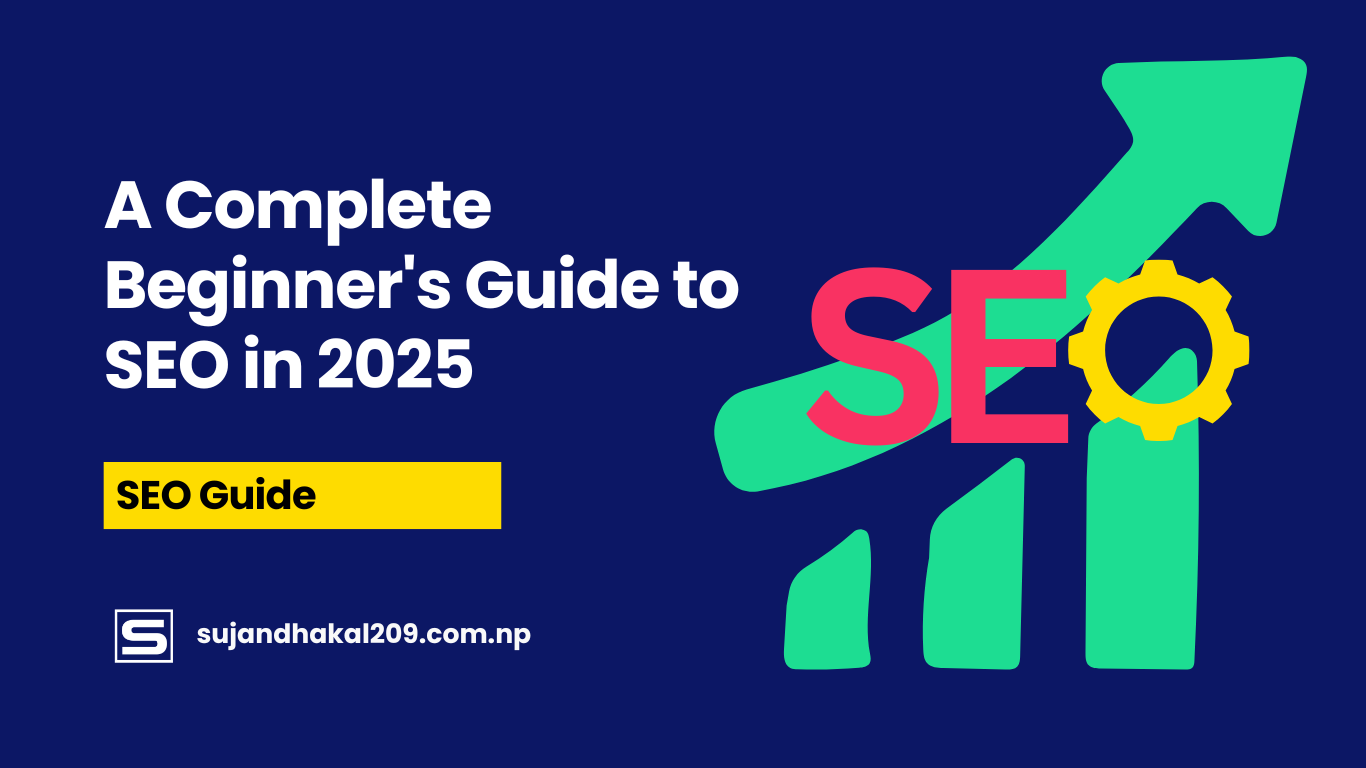
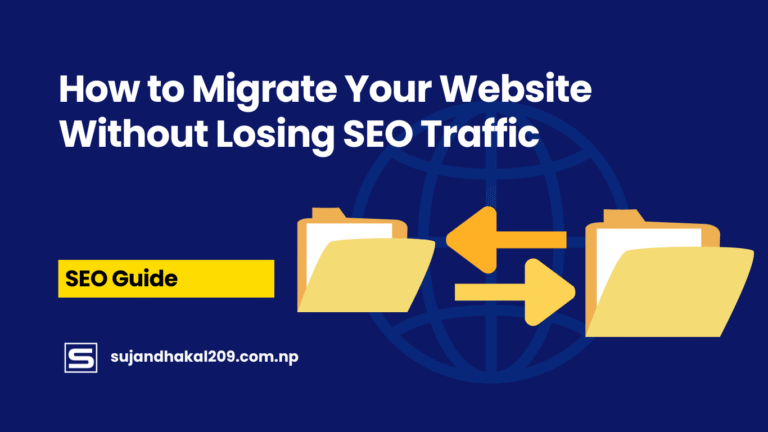
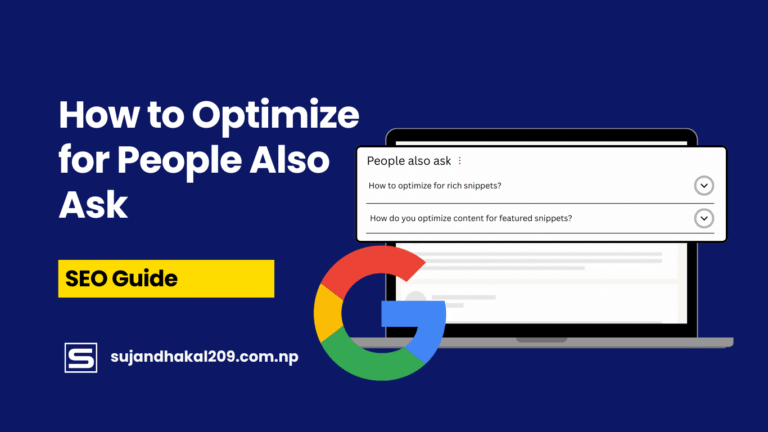
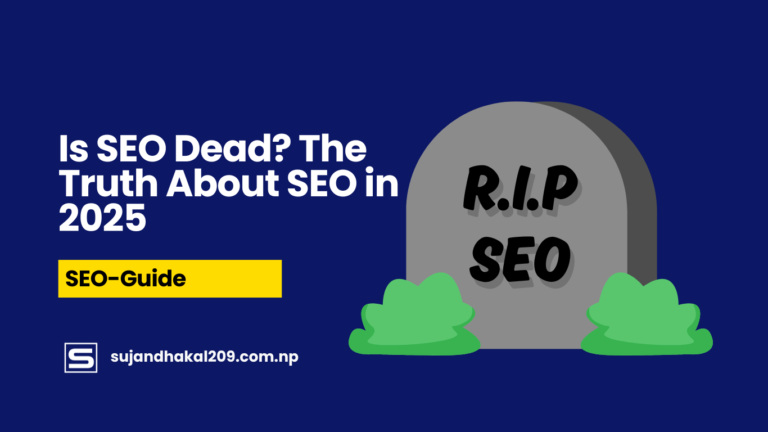
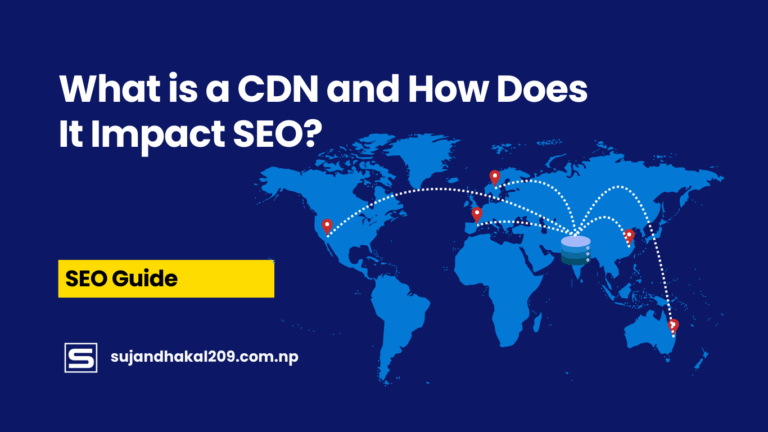
What are some of the key elements covered in the beginner’s SEO guide?